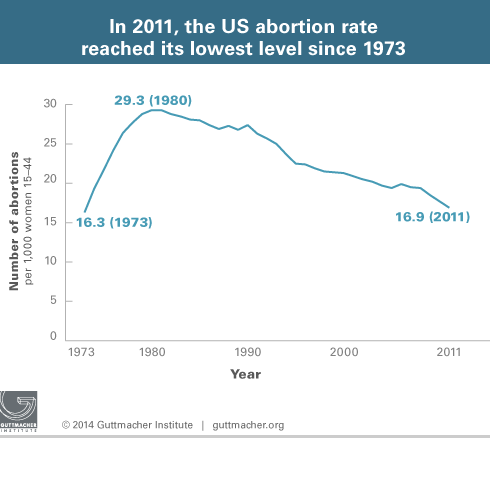Teasing out the facts in the latest abortion report

According to the results of a new study just released by Guttmacher Institute researchers, Jones and Jerman, the US abortion rate has dropped to its lowest point since legalization in 1973. The study was published in the Guttmacher’s in-house journal, Perspectives on Sexual and Reproductive Health.
Many are asking: Is it true abortions are on the decline in the US? Why are they declining? Should we believe the Guttmacher researchers’ results and conclusions?
Based on the information provided in their report, the data gathered is reasonably trustworthy. The authors were able to secure 86 percent of their data directly from abortion providers (up from 82 percent in 2008) and they went to great lengths to create as accurate as possible estimates. However many of the conclusions drawn are quite inappropriate, as they are not consistent with the data reported and/or involve inferences that are likely politically motivated, as opposed to being data-based.
In 2008, there were approximately 1.21 million US abortions, and in 2011, the number plummeted to roughly 1.06 million. More precisely, in 2011, there were 153,860 fewer abortions performed in the US, just under the population of Dayton, Ohio or Chattanooga, Tennessee.
Nationally, the abortion rate declined by 13 percent, with particularly steep declines in mid-western states that enacted laws during the study period, regulating service provision and reporting (e.g., Kansas down 35 percent and South Dakota down 30 percent).
Kansas had abortion laws requiring pre-abortion counseling and use of ultrasound, parental consent for minors, limited access to chemical abortion, limited abortion coverage in private insurance plans, amended abortion reporting laws, including mandated reporting of abortions performed on minors, close regulation of providers, limited abortion beyond 20 weeks, and banned partial-birth abortion.
South Dakota required pre-abortion counseling, including warning women that abortion significantly increases their risk of depression and suicide, required use of ultrasound, and limited access to chemical abortion.


